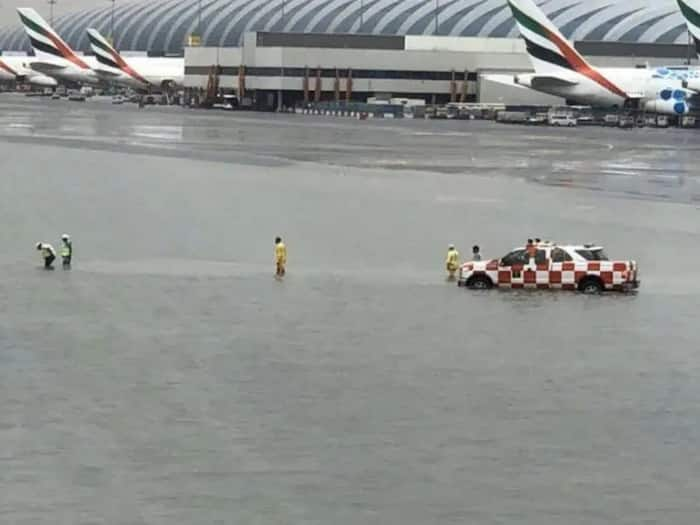Decoding Dubai Floods: Artificial Rain Or Climate Change – What Caused Havoc After Heavy Rains? EXPLAINED
Dubai Floods Latest News: Experts in the field of assessing the role of climate change on specific extreme weather events said global warming is the main reason behind the unusual rainfall. ine Arab city
Dubai Floods Latest News: Large-scale devastations were reported in Dubai after heavy rains lashed several parts of the Arab city on Tuesday, flooding portions of major highways and its international airport. The heavy downpour also caused widespread flooding in Dubai and other parts of the UAE because of the cloud seeding, some of the experts said
The unprecedented rainfall prompted the UAE government to issue warnings to urge employees to work from home and only leave “in cases of extreme necessity.” The heavy rainfall also caused the suspension of flight operations at the Dubai airport in the afternoon before resuming 25 minutes later.

What Triggered Heavy Rainfall in Dubai
The heavy downpour in Dubai disrupted the normal life that was associated with a larger storm system traversing the Arabian Peninsula and moving across the Gulf of Oman, CNN reported.
Apart from Dubai, rains were also reported in neighbouring Oman and southeastern Iran. Recently, heavy rains in Oman caused severe flooding in the region, and resulted in the loss of 18 lives.
Friederike Otto, an expert in the field of assessing the role of climate change on specific extreme weather events, however, said global warming is the main reason behind the unusual rainfall.
Otto said that it is highly likely that the deadly and destructive rain in Oman and Dubai was made heavier by human-caused climate change,” AFP reported.
Another report by Bloomberg attributed the heavy rains to cloud seeding, a process in which chemicals and tiny particles are implanted into the atmosphere to create more rain from clouds.

How Cloud Seeding Caused Heavy Rainfall
Notably, Dubai is one of the pioneering city in using cloud seeding technology to increase precipitation, which remains at less than 100 millimetres (3.9 inches) annually on average in the Persian Gulf region.
The prime objective of the deployment of this technology is to fulfil the water demands of a growing population and the economy, which has been diversifying into tourism and other areas.
Along with the UAE, other countries in the region, including Saudi Arabia and Oman, deploy similar technology to increase precipitation in their countries.
Scientists in India have also explored this option to mitigate pollution that grips the northern parts of the country with the onset of winter.

What Is Cloud Seeding And How it Works?
As per the experts, cloud seeding, is a weather modification technique to stimulate precipitation. In this process, substances such as silver iodide or potassium iodide are injected into clouds using aircraft or helicopters. Then these chemicals help in the condensation of water vapour and the formation of raindrops or ice crystals – leading to cloud formation and subsequent rainfall.
However, the success of cloud seeding depends on specific meteorological conditions, including the presence of moisture-laden clouds and suitable wind patterns.
This is not the first time, the United Arab Emirates earlier also resorted to cloud seeding technique in 2002 in a bid to address water security issues.
Bloomberg quoted Specialist meteorologist Ahmed Habib as saying seeding planes carried out seven missions over the past two days, indicating that this could also be an immediate trigger.


No comments: